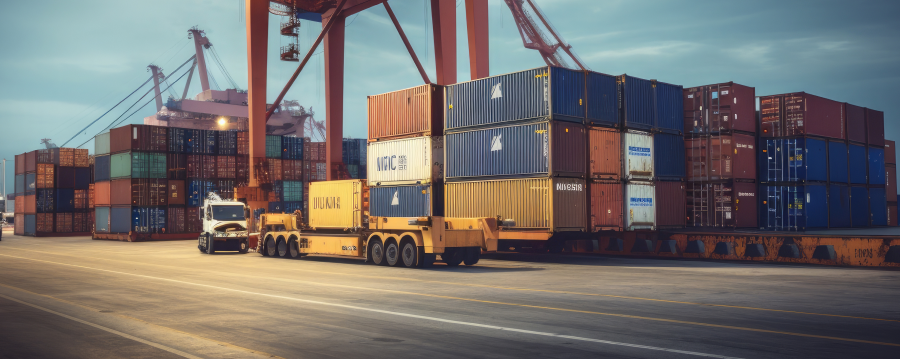We have heard from many public authorities that they want Brazil to increase its trade with foreign countries to US$ 1.0 trillion in 10 (years).
To analyze this possibility, let’s look at the facts.
In 2023, we had a trade flow of US$ 580 billion, with US$ 340 billion in exports and US$ 240 billion in imports, generating a positive balance of around US$ 100 billion.
Nice numbers!
But what’s behind them?
In order to materialize this trade in 2023, our logistical infrastructure will have to handle around 970 MT, of which 800 MT will be in exports and 170 MT in imports.
Our exchange ratio, which hasn’t changed for 10 years, is 4:1 – in other words, given the average value of our product (US$ 425/t), we need to export around 4 dollars for every dollar of imports.
Exports are concentrated in 3 (three) product groups: iron ore (47%), oil and oil products (13%) and grains (soybeans, corn and bran – 23%) account for 82% of exports.
The railroads, whose cargo is concentrated in iron ore (72% of the 530.7 MT handled in 2023), have made a decisive contribution to the export flow, even though they only transport 25% of the grain harvest (320 MT).
Therefore, a large volume of cargo from exports and imports is moved by road, which is known to be more expensive.
Our logistics infrastructure is small, inefficient and expensive.
Factors such as the Transport Matrix concentrated on roads, the rail network operated as a monopoly and insufficient investment in infrastructure form a scenario that is difficult to overcome in the short and medium term.
As a backdrop to this scenario, more than 60% of the roads are in a regular, poor or very poor state; only 40% of the railroads are in full operation; the hodrovias are yet to become operational and the cabatogem is still at the same level as in recent years.
Billions of reais need to be invested continuously and permanently to improve the current condition of the logistics infrastructure and billions more to expand its capacity.
Partnerships with the private sector are absolutely necessary, with attractive business models to make it possible to reduce costs and increase competitiveness.
And the US$ 1.0 trillion, is it possible?
Maintaining current trade relations with the rest of the world, in order to achieve a trade flow of this size, Brazil needs to
- Export US$ 600 billion, equivalent to a physical flow of 1.4 BTU/year of products;
- Importing US$ 400 billion, equivalent to a physical flow of 300 MTU/year of products;
- Move 1.7 BTU/year of products in the internal logistics infrastructure;
- Increase domestic production and transportation capacity for foreign trade by 730 MTU/year, or 75% more than current levels.
On the other hand, in order to achieve these movement volumes in 10 years, we would have to make the following impacts on internal logistics feasible:
- Increase rail transport capacity by 300 MT, equivalent to implementing 6 (six) projects the size of Ferrogrão;
- Increase port handling capacity by 700 MT, equivalent to building 4 (four) Ports of Santos;
- Increasing the supply of road capacity by 420 MT, equivalent to implementing 55,000 km, with duplications, extensions and new roads;
- Produce a crop of 575 MT, equivalent to adding 60 million ha to the current planted area;
- Invest R$410 billion in land logistics, of which R$275 billion in roads and R$135 billion in railroads.
And now, what do you think?
Is it possible for Brazil to achieve a foreign trade flow of US$ 1.0 trillion in 10 years?

